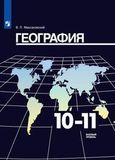Упр.2 Юнит 3.1 ГДЗ Starlight Баранова 11 класс
Чтение
2 Опишите животное на картинке. Как вы думаете, почему его называли «Одиноким Джорджем»? Прочтите текст, чтобы узнать это.
Одинокий Джордж
“Одинокий Джордж был уникальной черепахой. Он выжил, чтобы рассказать историю существования своего подвида на крошечном изолированном острове Пинта.” Отчеты Тони Харпера
Иногда путь к роману долгий. «Одинокий Джордж», гигантская галапагосская черепаха, была последней из своего подвида и вела глубоко одинокое существование. Живя далеко в Тихом океане на острове Пинта на Галапагосских островах, он официально считался самым редким живым существом на Земле до своей смерти в 2012 году в возрасте более 100 лет.
Ни одно животное не передало историю и таинственную красоту Галапагосских островов лучше, чем эта гигантская черепаха. Раньше тысячи этих существ бродили по островам, включая вулканические склоны Пинты. Наблюдение за ними Чарльза Дарвина, посетившего эти места в 1835 году, даже стало частью его теории эволюции, изменившей мир.
К сожалению, однако, в основном в результате столетий, проведенных моряками, охотящимися на гигантских черепах в поисках пищи, в настоящее время на Галапагосских островах осталось всего около пятнадцати тысяч особей. Из пятнадцати известных подвидов четыре считаются вымершими, как и гигантская черепаха Пинта, пока в 1971 году не был обнаружен Одинокий Джордж. Это стало приятным сюрпризом для ученых, поскольку с 1906 года на острове Пинта не было найдено ни одной другой черепахи Пинта.
В течение десятилетий, последовавших за открытием Джорджа, он стал чем-то вроде звезды. Защитники природы на исследовательской станции Чарльза Дарвина попытались спасти некоторые из его генов, скрестив его с другой черепахой. Две самки с близлежащего острова Изабелла, наиболее близкие родственники подвида пинта, которых только можно было найти, были помещены в его вольер вместе с ним в 1992 году. Однако, к сожалению, Джордж не понял намека!
Затем биолог-эволюционист Джеффри Пауэлл выдвинул возможную причину, по которой одинокий Джордж не романтические отношения с дамами из «Изабеллы». Возможно, предположил он, они просто слишком отличались от него, чтобы быть подходящей парой. Он отметил, что моряки часто перевозили черепах с одного острова на другой. Поэтому его вопрос звучал так: «Откуда мы знаем, что эти черепахи – ближайшие родственники Одинокого Джорджа?». Другими словами, для Джорджа, живого и невредимого, может найтись идеальная пара Пинта не только на Изабелле, но и на каком-нибудь еще более отдаленном острове.
Чтобы начать проверку своей теории, профессор Пауэлл и его исследовательская группа проанализировали ДНК семи черепах Пинта – шести умерших музейных образцов и одного самого Джорджа – и сравнили ее с образцами крови двадцати семи гигантских черепах, живущих на склоне вулкана на северной оконечности Изабеллы. Среди этих образцов. они нашли одну черепаху, возрастом около тридцати лет. с дорогими признаками родословной Пинты. К сожалению, однако, недавно обнаруженная черепаха не была подходящим романтическим партнером для Джорджа: он был мужчиной! Он не был чистокровным, другим. В то время как его отец был родом с острова Пинта, его мать была родом с вулкана Вулф на Изабелле. Однако Пауэл считал, что он совершил прорыв, потому что это доказало, что в недавнем прошлом на острове размножался самец пинты. В этом случае существовала явная возможность найти там других особей Пинты, возможно, даже самку.
Однако в исследовании Пауэлла была изучена лишь небольшая случайная выборка. Поэтому в 2008 году группа исследователей вернулась к вулкану Изабелла, где они собрали более 1600 черепах. К их изумлению и восторгу, когда были взяты образцы крови, у семнадцати черепах было обнаружено высокое содержание ДНК пинты. Поскольку черепахи могут жить 150 лет, некоторые из этих существ, возможно, были ближайшими родственниками Джорджа!
Сейчас семь из этих черепах содержатся в вольере Джорджа и вокруг него), в то время как ученые пытаются вывести их. В частности, у одного мужчины и женщины есть ДНК Пинты, и есть надежда, что всего за несколько поколений 95 процентов "потерянных" генов Джорджа можно будет полностью воссоздать. Таким образом, судьба черепахи Пинта, возможно, не так безрадостна, как считалось ранее. Между тем, хотя Джорджа больше нет с нами, его статус иконы сохранения по-прежнему неоспорим.
Решение #
The animal in the picture is a giant tortoise. I imagine he was called ‘Lonesome George’ because he lived by himself.
(Животное на картинке – гигантская черепаха. Я полагаю, его называли «Одинокий Джордж», потому что он жил один.)
Приведем выдержку из задания из учебника Баранова, Дули, Копылова 11 класс, Просвещение:
Reading
2 Describe the animal in the picture. Why do you think he was ‘Lonesome George’? Read the text to find out.
Lonesome George
“Lonesome George was a unique tortoise. He lived to tell the story of the existence of his subspecies on the tiny isolated island of Pinta.” Tony Harper reports
Sometimes the road to romance is long. ‘Lonesome George', a giant Galapagos tortoise, was the last of his subspecies and had a profoundly lonely existence. Living far out in the Pacific on the island of Pinta in the Galapagos Islands, he was officially the rarest living creature on Earth until his death in 2012 at the age of over 100.
No animal better captured the history and mysterious beauty of the Galapagos Islands than this giant tortoise. There used to be thousands of those creatures roaming over the islands, including the volcanic slopes of Pinta. Observation of them by Charles Darwin, who visited there in 1835, even formed part of his world changing theory of evolution.
Sadly however, mostly as a result of centuries of passing sailors hunting the giant tortoises for food, there are now only an estimated fifteen thousand left in the Galapagos Islands. Of the fifteen known is subspecies, four are Steady thought to be extinct, as was the Pinta giant tortoise until Lonesome George was discovered in 1971. This came as a pleasant surprise to scientists since no other Pinta tortoises had been found on Pinta Island since 1906.
In the decades that followed George’s discovery, he became something of a star attraction. Conservationists at the Charles Darwin Research Station tried to rescue some of his genes by mating him with another tortoise. Two females from the nearby island of Isabela, the most closely related to the Pinta subspecies that could be found, were put into his enclosure with him in 1992. Unfortunately, though, George failed to take the hint!
Then evolutionary biologist Jeffery Powell came up with a possible reason why lonesome George was not finding true romance with the ladies from Isabela Perhaps, he suggested, they were simply too different to him to be a suitable match. Sailors often carried the tortoises from one island to another, he pointed out. His question, therefore, was: ‘How do we know these tortoises are Lonesome
George's closest relatives?’ In other words, there could be a perfect Pinta match for George alive and well no just on Isabela but on some even more distant island.
To begin testing he theory, Professor Powell and Ns research team analysed DNA from seven Pinta tortoises - six from deceased museum specimens and one from George himself - and compared it with blood samples from twenty-seven giant tortoises living on the side of a volcano on the norther tip of Isabela. Among these samples. they found one tortoise, about thirty years old. with dear signs of Pinta ancestry. Sadly, however, the newly discovered tortoise was not a suitable romantic partner for George: he was male! He was not pure bred, other. While his lather was originally from Pinta Island, his mother came from Wolf Volcano on Isabela. Powel considered he had made a breakthrough, though, because it proved that in the recent past, a Pinta male had been breeding on the island. In that case, there was a clear possibility of finding other Pinta individuals out there, maybe even a female.
However, Powell's study had only examined a small random sample. So in 2008, a team of researchers returned to the Isabela volcano, where they collected more than 1,600 tortoises. To their amazement and delight, when blood samples were taken, seventeen tortoises wore shown to have high levels of Pinta DNA. As tortoises can live for 150 years, some of these creatures may have been George's immediate relatives!
Now, seven of these tortoises are housed in and around George’s dd enclosure) while the scientists attempt to brood them. One male and female in particular both have Pinta DNA and it is hoped that in just a few generations, 95 percent of George’s ‘lost’ ancestral genes can be go recreated. Therefore, the fate of the Pinta tortoise may not be as bleak as was previously thought. Meanwhile, although no longer with us, George’s status as a conservation icon is still undisputed.
1 The writer mentions Charles Darwin in order to emphasise the significance of giant tortoises
1 his importance as a scientist
2 his link to the Galapagos Islands.
3 the large numbers of tortoises on the Galapagos Islands.
4 the significance of giant tortoises.
2 According to the third paragraph, what were scientists pleased about?
1 There was a larger number of tortoises on the islands than previously believed.
2 One subspecies of giant tortoise was not extinct as previously thought
3 A new subspecies of giant tortoise had been discovered.
4 They had been the ones to make a particular discovery.
3 The writer uses the phrase ‘he failed to take the hint’ (line 26) to show that Lonesome George didn't behave In the way the conservationists had expected.
1 didn't behave In the way the conservationists had expected.
2 didn't seem to get on with the tortoises from Isabela.
3 behaved differently to the tortoises from Isabela.
4 wasn't used to the company of other tortoises.
4 In the fifth paragraph, what does the writer suggest about Pinta tortoises?
1 They could have originally come from Isabela Island.
2 They may be found on islands other than Pinta Island.
3 They wore brought to Pinta Island by sailors.
4 They were hunted by sailors more than other subspecies.
5 After carrying out his research on Isabela Island, Professor Powell felt hopeful of a future discovery.
1 became more uncertain about his theory.
2 was confused about Lonesome George’s ancestry.
3 felt hopeful of a future discovery.
4 was disappointed with his findings.
6 Continued research on Isabel Island was based on a much larger sample of tortoises than before.
1 only tortoises that had reached a certain age.
2 the tortoises from the previous study again.
3 all the tortoises on the Island.
4 a much larger sample of tortoises than before.
7 What do we learn from the last paragraph of the article?
1 The future of Pinta tortoises is now ensured.
2 Scientists can now trace Lonesome George’s ancestry.
3 Lonesome George continues to symbolise conservation.
4 The prospects for successful breeding are not bright.
Популярные решебники 11 класс Все решебники
*размещая тексты в комментариях ниже, вы автоматически соглашаетесь с пользовательским соглашением





